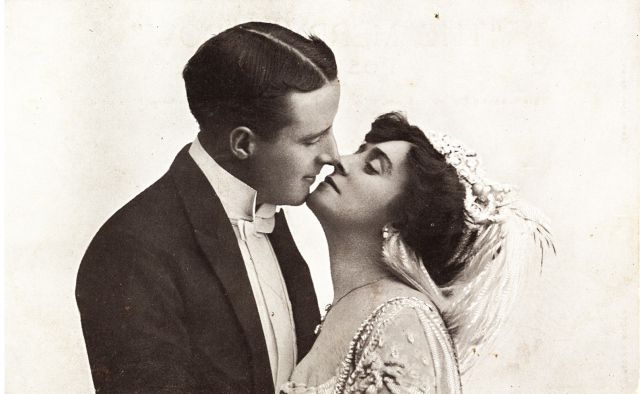A love affair with The Merry Widow
State Opera’s Artistic Director, Stuart Maunder tells us of the long-enduring love affair Australia has had with The Merry Widow.
The ‘heart’ in The Merry Widow is irresistible.
Australia has had a love affair with the Widow since Carrie Moore, a Geelong-born 25-year old opened as The Merry Widow in 1908 at Melbourne’s Her Majesty’s Theatre. Over 100,000 people enjoyed Carrie Moore’s ‘dreamily alluring’ dancing and for the next twenty years The Merry Widow continued to play all round the country on the Williamson circuit.
Despite being remembered today for only one role, the Maid in The Maid of the Mountains, Gladys Moncrieff always maintained her favourite role was The Merry Widow. ‘Our Glad’ waltzed her way through the thirties and forties in a highly corseted black velvet gown with the debonair matinee idol Max Oldaker as her Danilo.
J C Williamson mounted a new production of The Widow in 1943 to showcase Australia’s celebrated song and dance partnership in the mould of Fred Astaire and Ginger Rodgers; Cyril Ritchard and Madge Elliot. Dubbed by the press as ‘the greatest love story in Australian theatre’ the two had consistently denied that they were romantically involved. According to Madge, they were ‘just good companions’ who danced. And Cyril commented that they married ‘after ten years of whirlwind courtship’.
This production and ran for eight months the two continued to tour Australia and from 1944 until the end of World War 2 played to troops in Cairo, Alexandria, Italy, Paris, Holland and Brussels. This Australian production then played London’s Coliseum. When Cyril and Madge left our shores Gladys Moncrieff and Max Oldaker took up the waltz once again.
For some inexplicable reason, the 1950s was a ‘Widow-free zone’ in Australia. Perhaps there were deemed no possible Widows in Australia at the time. Certainly, the one Australian singer who became most associated with the role of the Widow was learning her craft in England; June Bronhill. The classic 1957 Sadlers Wells production made June Bronhill a star; the role and ‘Vilja’ were to become her calling card. The Sadlers Wells production was brought to Australia in 1960 and played to sell-out houses throughout the country.
Opera Australia has produced the operetta four times. The 1972 production, directed by Bernd Bentaak and designed by Tom Lingwood, provided a showcase for the undeniable onstage chemistry of Suzanne Steele and Robert Gard. In 1978 Designer Kristian Frederickson transformed the Concert Hall of the Sydney Opera House into a cream, grey and white Art Nouveau confection to showcase the Widow of Dame Joan Sutherland. The company certainly got their monies worth from this extravagant and elegant Lotfi Mansouri production as it played numerous revivals with equally numerous Widows over the following 35 years.
In 2004 director Simon Phillips and designers Michael Scott Mitchell and Hugh Coleman created an Art Deco-inspired showcase for the Widow of Yvonne Kenny. Resplendent in black and pink, Yvonne appeared from an oversized- cigarette box and waltzed down an equally oversized fan which opened to become a staircase. And in what was to be the penultimate version to this Opera Conference production, 2010 saw Amelia Farrugia and David Hobson headlining an Opera Australia revival of Giles Havergal’s Opera North version, in the boldly coloured designs of Leslie Travers.
The ‘heart’ in The Merry Widow is irresistible. It is in turn charming, romantic, amusing, tuneful…and sentimental. “Sentimental” is, of course, a dangerous word to use today, but remember what composer Richard Rogers (a man who acknowledged that his first experience with The Merry Widow began his life-long obsession with the waltz) once said in response to the charge that The Sound of Music is sentimental:
‘Too much of anything is harmful. No one is comfortable with an excess of hearts and flowers, but there is no valid reason for hiding honest emotion…it’s my conviction that anyone who can’t, on occasion, be sentimental…is sadly maladjusted.’



